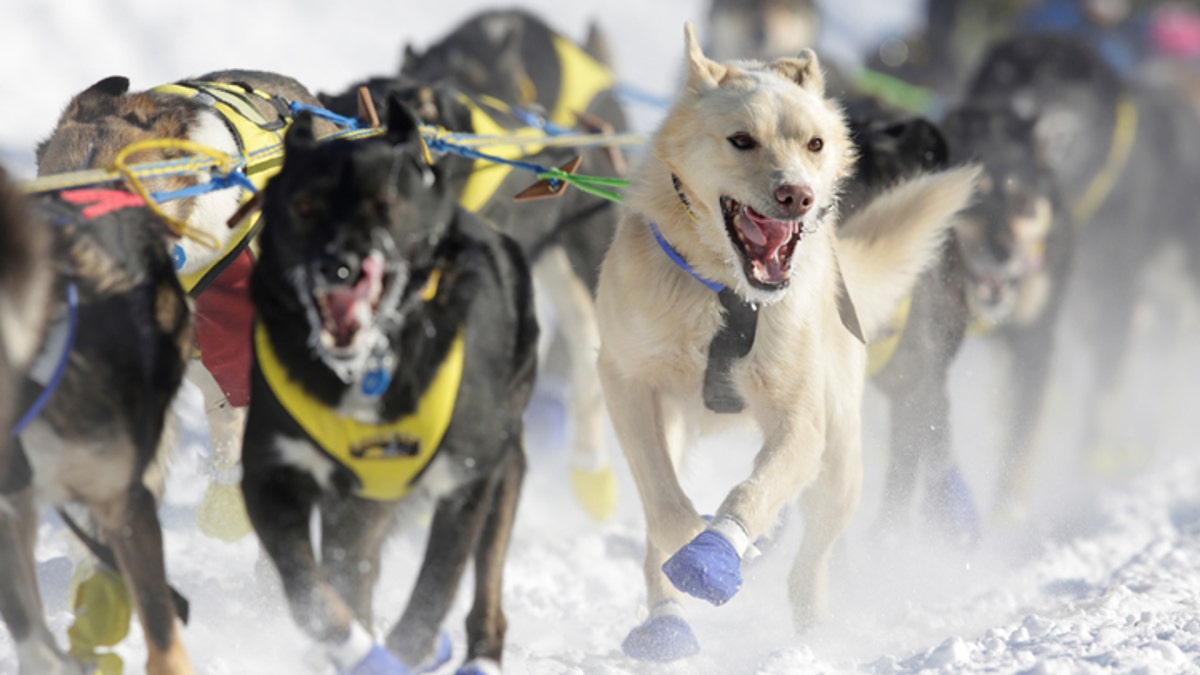Fox News Flash top headlines for March 5
Fox News Flash top headlines are here. Check out what's clicking on Foxnews.com.
The 2021 Iditarod is set to begin on Saturday, but the multi-day sled dog race across Alaska has some major changes planned due to the COVID-19 pandemic.
Participants in this year's 860-mile course will instead race in a loop that begins outside of Anchorage and eliminates many of the stops traditionally required in previous Iditarod races. The teams will travel from Deshka Landing to Flat, a mining ghost town, and then loop back around and return the same way they came, rather than continuing northwest toward Nome.
The course still includes landmarks like the Alaska Range, the Happy River Steps and the Dalzell Gorge, which, as race organizers have noted, each teams will now need to navigate twice.

The 2021 Iditarod is set to begin on Saturday, but the multi-day sled dog race across Alaska has some major changes planned this year because of the COVID-19 pandemic. (AP Photo/Michael Dinneen, File)
CRUISE LINES OFFER ‘ALASKA LAND VACTIONS’ THIS SUMMER AS CANADIAN PORTS REMAIN CLOSED TO TOURISTS
The race, which typically kicks off in Anchorage with a large ceremonial start, will instead begin with little in-person fanfare, as no spectators will be allowed at the starting line, according to Iditarod CEO Rob Urbach. Instead, the race will be broadcast on Iditarod.com.
"While the Iditarod believes the future does not belong to the fainthearted, we take the health and well-being of our racers, volunteers, staff, and spectators very seriously," Urbach said in a written statement. "After consulting with our stakeholders and in consultation with the Municipality of Anchorage, we decided to cancel our traditional ceremonial start in Anchorage due to the COVID-19 concerns of a large gathering."

This year’s 860-mile Iditarod course is a loop that cuts off the traditional start of the route and eliminates many of the stops that would be along the way in normal times (REUTERS/Nathaniel Wilder)
CLICK HERE TO GET THE FOX NEWS APP
There are fewer international mushers competing this year, too. Last year’s winner, Thomas Waerner of Norway, is not on the lineup because of travel restrictions, according to race organizers.
The race has also added precautions like requiring mushers to have two negative coronavirus tests before they can travel to the race, making health checks at the start of each race day, and requiring everyone to wear masks.
This won't be the first time mushers have crossed Alaska in the midst of a disease epidemic. The Iditarod's traditional route partially recreates the trail 20 mushers took in 1925 to deliver much-needed medicine to Nome during a diphtheria outbreak.
"Let’s all do our part and make sure we wear our masks, practice social distancing, wash our hands and keep our spirits high," Urbach said.
CLICK HERE TO SIGN UP FOR OUR LIFESTYLE NEWSLETTER
Organizers added that next year's Iditarod, which will mark the race’s 50th anniversary, will be celebrated in Anchorage with a special event to mark the occasion.
